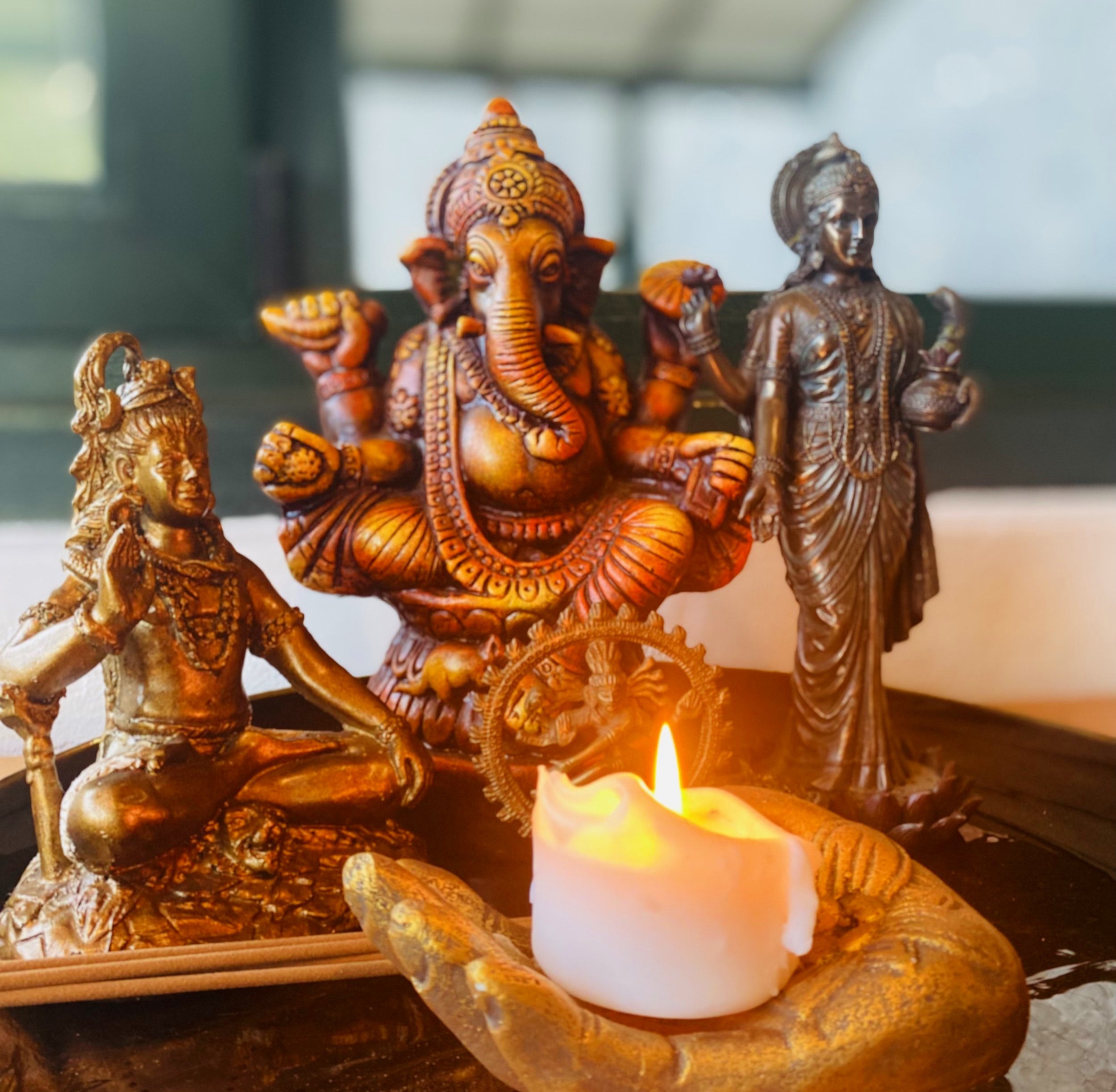
Start your sādhanā
Learn to chant
Sanskrit is the world’s oldest language for spiritual literature and Vedic chanting. In the Krishnamacharya tradition, similar to other lineages, the emphasis on learning Sanskrit is linked to grammatical study, science of vibration, chanting (not singing), and philosophy. By learning Sanskrit grammar, a student can read sacred texts, pronounce mantras properly, and honor the traditions to grow in one’s personal development of yogic wisdom.
Sanskrit is also the sound based structured language is designed mathematically with intonations, precision, clarity, and traditionally passed down orally from teacher to student. Strict rules of recitation are often observed, requiring complete concentration during the practice. The mantras and hymns were revealed to the great sages of ancient India in deep meditative states, which is why mantras of the Vedas hold symbolism which through recitation, self-study and discipline, reveal themselves to the practitioner resulting in personal healing and growth. Whatever your knowledge level, cultural background, or previous experience with chanting, each student can start or expand upon their learning path with guidance.
Sādhanā
Your daily spiritual practice or focused ritual has a specific purpose; designed for meditation and inner absorption. Learn practical skills to overcome obstacles, gain clarity, and enhance your health and happiness.
Learn the basics
For Beginners and Teachers
Student Teacher Māntra: An ancient mantra recited before studying sacred scriptures and at the beginning of Yoga Teacher Training classes. This shanti mantra “Om Saha Navavatu” appears at the beginning of the second chapter of the Taittiriya Upanishad. It is sacred and pure with strong vibrations designed to offer nourishment and protection along their studies.
Daily Chants: 4 classics honoring Gaṇeśa, Sarasvatī, Sūrya, and the Guru. These are very popular prayers typically chanted at the beginning of any new undertaking or even any activity, where we seek blessings to pave the way for our desired undertaking to happen in our projects, our education, and our day.
Ashtanga Opening & Closing Chants: For dedicated Asthangis seeking support for Mysore or Led classes.
Peace Māntra: For peace, tranquility, and serenity
The Hanuman Chalisa: For the devoted Bhakti yogis; get a chanting pocketbook
Vakratuṇḍa mahākāya: One of the four daily chants: Gaṇeśa (to remove obstacles)
Sarasvatī Namastubhyaṃ: Another one of the four daily chants: Sarasvatī for art, music, and teaching
Guru Mantra: For the the Trinity honoring your teachers and many others Brahmā, Vişņu, and Śiva
The word mantra means
that we will ponder, that we will reflect upon.
You arrive to a teacher, they say something, and you go back home to reflect upon that again. The purpose of mantra is to help us cross a harbor or obstacle.
मननात् त्रायते इति मन्त्रः॥
mananāt trāyate iti mantraḥ ||
“Who reflects on this,
will cross the obstacle”.
— TKV Desikachar on Vedic Chanting






